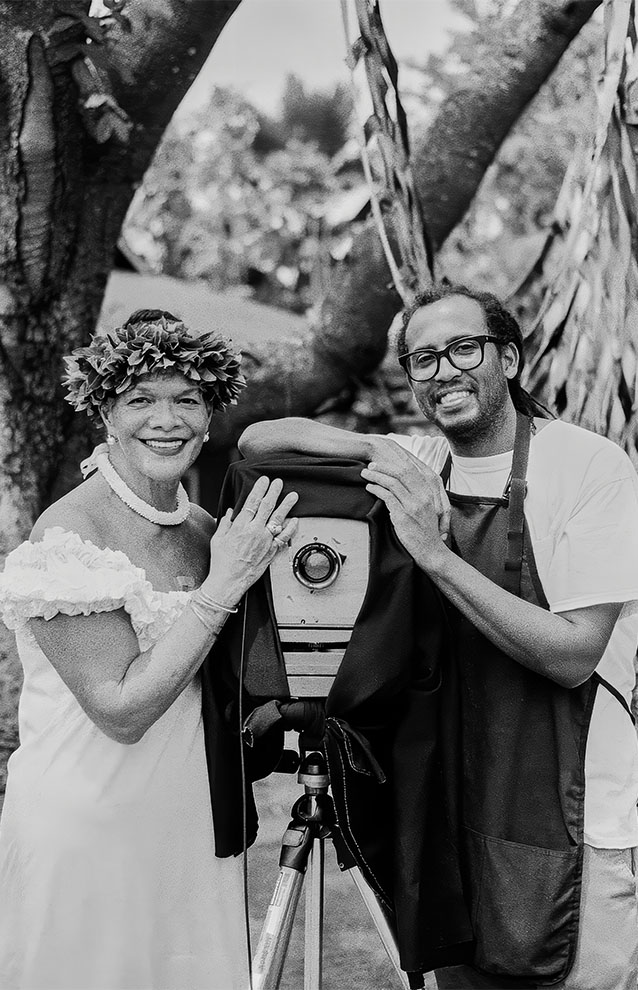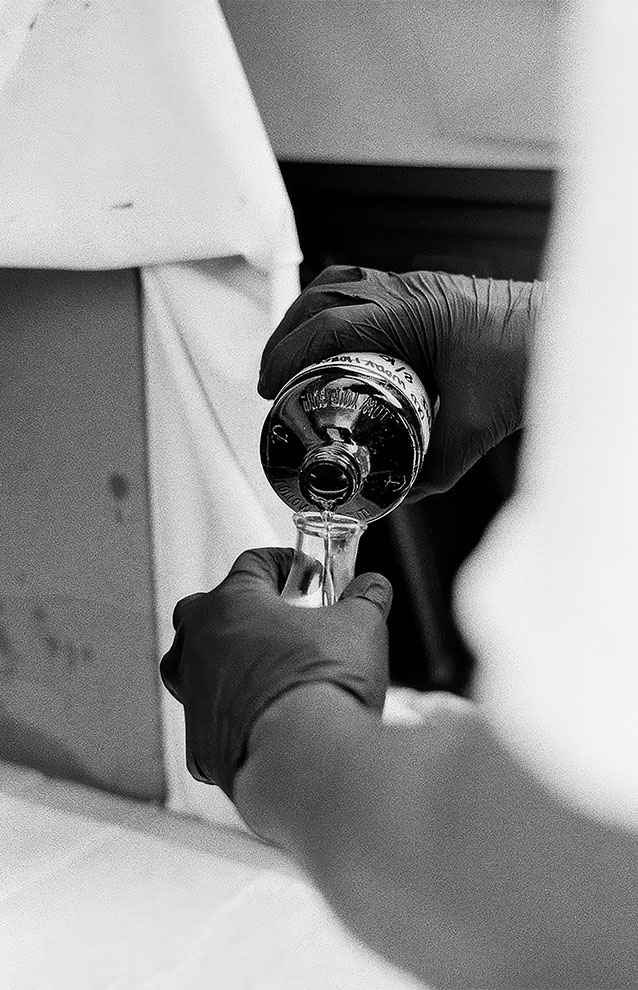ABOVE: The Fukumitsu family in their taro patch in Hakipuu, Oahu.
In 1851 a photographer named Frederick Scott Archer figured out that if you coat a glass or aluminum plate in a chemical called collodion and bathe it in silver nitrate, you can slide it into a large-format view camera (essentially a big wooden box with a lens sticking out of one side) and make a picture by opening the lens to expose the plate to light. Despite being all the rage from the 1850s to the 1880s, the process fizzled out as more advanced and efficient technologies developed.
Over a century later, photographers worldwide have revived this antiquated process. One of them is Oahu-based Kenyatta Kelechi. Born in Kailua, Kelechi didn't grow up knowing much about his Native Hawaiian heritage on his mother's side—she is of Chinese, Native Hawaiian and Caucasian descent. His recent body of work, Kenyatta Kelechi: Laulima, on display at Honolulu Museum of Art until January 12, 2025, was a way for him to learn more about it. He began making wet-plate photographs in 2015 while earning his BFA from the University of Hawaii at Manoa, to challenge himself. One day he found an old book filled with what looked like wet-plate photographs of Hawaiian people. As he dug into the history of wet-plate photography in Hawaii, he repeatedly found images like a cliche hula girl in a coconut shell bikini top and grass skirt posed in front of a fake backdrop. Kelechi decided to do the opposite, using the process to collaborate with Hawaiians rather than exploit them.

Kenyatta Kelechi, seen with musician Mihana Aluli Souza, has revived the art of wet-plate photography to create images of reminiscent of old Hawaii. PHOTO BY VINCENT RICAFORT

Kelechi mixing his own photographic chemicals. PHOTO BY VINCENT RICAFORT
What the subjects wear, where the image is taken and what story the image tells is up to them. "In all these books and in all these old pictures, there's never a name of the person who's in the picture or a story about them, and I felt like it was important that names are used and stories are told," he says. When Kelechi arrives on-site with his SUV filled with camera equipment and chemicals, he sets up his gear and portable darkroom, slaps on protective glasses and latex gloves and gets to work. He's mixed his own chemical cocktails for eight years now to save money. Once he captures a photograph, he must develop it within about fifteen minutes before the plate dries. Because there are many variables to consider, such as weather, water quality and chemical composition, it can take multiple attempts to get the shot. "It's a really chaotic process," Kelechi says. "Anything that can go wrong will go wrong. You have to always have a contingency plan."
Kelechi has photographed some of Hawaii's most renowned Kanaka Maoli (Native Hawaiians), such as singer Raiatea Helm and big-wave surfer Titus Kinimaka, in a style reminiscent of a nineteenth-century history book—only this time with an accurate story.


